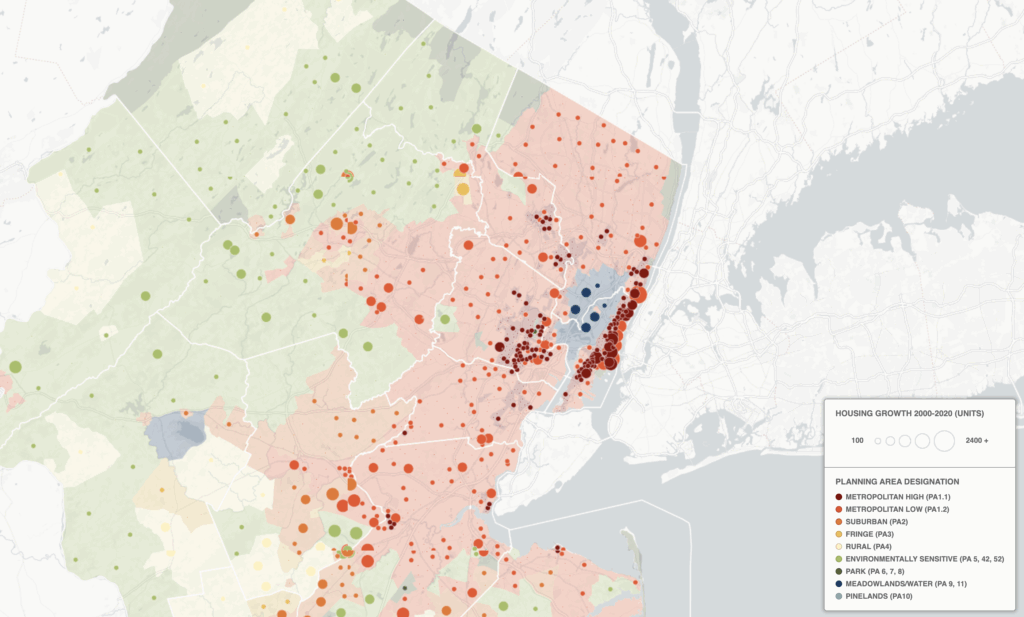For decades, Penn Station has delivered the same experience: crowding, delays, and avoidable dysfunction. New York now faces a choice between two futures. One doubles down on the failed terminal model with a costly annex (“Penn South”). The other modernizes the system with through-running—trains that pass through Penn instead of dying there.
A new Regional Plan Association analysis, Mapping New Jersey’s Growth, shows why the second path isn’t just better—it’s necessary.
Follow the People
New Jersey’s growth is converging on the very rail corridors that feed Penn:
- 52% of statewide housing growth (2000–2020) happened in dense, transit-rich Metropolitan Planning Areas.
- 39% of all new housing since 2000 was built near transit—up from 21% in the prior two decades.
- Multifamily construction (5+ units) has more than doubled and now makes up nearly a third of new homes.
Translation: more people are choosing transit-oriented neighborhoods, and their daily trips funnel through Penn. The station is the system’s hinge.
The Terminal Trap
Penn South would copy-paste the worst part of Penn’s design: dead-end tracks. Trains would still pull in, dump every rider into already jammed concourses and subways, then sit—blocking track space—while crews turn them around.
That’s not capacity. That’s a bigger bottleneck. It adds train slots on paper while ignoring where the actual pressure lives: platforms, concourses, and connections.
Through-Running Is the Fix
Through-running treats Penn as a crossroads, not a cul-de-sac.
- More service, same footprint. A through-running track can move 2–3× as many trains per hour as a stub-end track because there’s no reverse move.
- Less crush in the station. Riders bound for the East Side, Queens, Brooklyn, Long Island—or even Connecticut—stay on the train. Fewer people pour into the concourse at once.
- One network, one labor market. Through-running links NJ Transit, LIRR, and Metro-North into a single, one-seat-ride region—think London’s Elizabeth Line or Paris’s RER—connecting places like Morristown to Stony Brook or Princeton Junction to Kips Bay without a transfer.
The Stakes
RPA’s data is clear: growth is densifying along transit. Building another stub-end terminal fights that trend and cements 20th-century operations in a 21st-century city.
The Choice
We can spend billions to enlarge yesterday’s problem—or use the same tunnels and platforms more intelligently, move more trains, and move people better.
The facts point one way. Build through.
